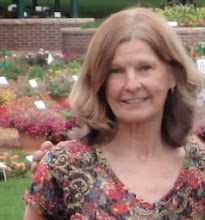There is a fond place in the hearts of many Walla Walla folks for the Bee Hive Building on the corner of First and Main. Built of dark red brick and featuring tall, gracefully curved upstairs windows, it now houses several businesses. It's really the Sayer building, named for the man who built it in 1890, but everybody calls it "The Bee Hive" because they remember the department store that was there for so many years. "You could buy anything you wanted at The Bee Hive," June told me. June's 88, but younger people, too, have vivid memories of what they bought there as late as the 70's. "Blue Bell Jeans," says Ron. Tina (too young to have any Bee Hive experiences herself) says her grandma went there every Christmas to buy still another Mr. Potato Head for Tina's father. "Oh, yes, the toys," says Diane, "all displayed upstairs at Christmas time on huge tables, and downstairs way at the back you sat on little metal tools to try on shoes."
That's what people told me about the Bee Hive Department Store, but when I shared my findings that the building was for many years also a lodging house, most were surprised. The 1892 city directory tells me that at first several separate businesses operated from the Sayer Building: Mr. Lynch, Steamfitter, Mrs. Howells of the Elite Dressmaking Parlor, and Regal Shoes with Mr. Schumaker (I am not making that up) in charge. Kind of an early mini-mall. The directory also says that Mrs. Howells and Mr. Schumaker had their "res" in the building as well as their businesses. I had trouble imagining Mrs. Howells setting up a cot amongst her dressmaker forms and sewing machines. And how could one have as many as seven men and women living in one building without "facilities" and privacy and some kind of communal space for Alonzo Robbins, "horsebreaker," and John Clary, "marker" at the Walla Walla Laundry, to have a friendly chat at the end of the day? Even though the directories say exactly who had their addresses at "The Bee Hive Lodging House" year after year, there was no way of knowing how the space was divided. I wanted the lodging to have been upstairs where the residents could enjoy the light from the windows and a view of the activity of Main Street, but how the lodgers and businesses occupied the building was going to be a history mystery and I'd never know for sure. Well, I wouldn't have known if it hadn't been for the fire.
So newsworthy was the blaze at the Sayer Building in May of 1902, that the Spokane Spokesman covered it. The fire broke out just before midnight, the paper said, and "In the building are the Bee Hive Store, conducted by William Ferguson and the Bee Hive Lodging House overhead." Although some of the stock and most of the floor was damaged in the store space below, no one was seriously hurt. All the residents escaped early, the news story reported, except "Winfield Scott Taylor, a ranch hand, who in trying to get out, lost his way, stumbled into a closet...and when found by fireman after an hour was almost suffocated."
Mystery solved. The lodging component of the Bee Hive was "overhead" and the lodgers did have the high ceiling rooms I wanted them to have, with the the lovely views of the growing town below. Over its twenty years it must have been comfortable and gracious enough to satisfy the superintendent of the hospital James Mullinix, and his wife (who was the hospital matron), plus carpenters, farmers, painters, and several widows and single ladies and gentlemen.
Mr. Ferguson's inventory must have grown and his need for space increased, because by 1910 the directories no longer mention the Bee Hive Lodging House or list its residents.. For years the Bee Hive Department Store's slogan was the same: "Why Pay More When You Can Buy for Less at the Beehive?" and it continued to sell "fabrics, cotton union suits, boy's trousers, soap, brassieres, junior dresses, toys" and more until the late 1970s, when it closed.
If you walk into the Main Street door of Starbuck's or through the South First entrance to The Coffee Perk, you are in the spaces where business was done and goods were sold by the Bee Hive Department Store. But if you climb the stairs that now lead to the Bee Hive Salon, you can imagine yourself a resident of the Bee Hive Lodging House, where you would have occupied one of those comfortable, sunny upstairs rooms with the high ceilings and terrific views.
Thanks, Joe Drazan for the 1910 photo of the Bee Hive.



